Retreat to the quiet
Gather your nearest and dearest to enjoy sun, sand and good times in Asia’s best beach villas. Imogen Lepere finds pads where privacy is guaranteed
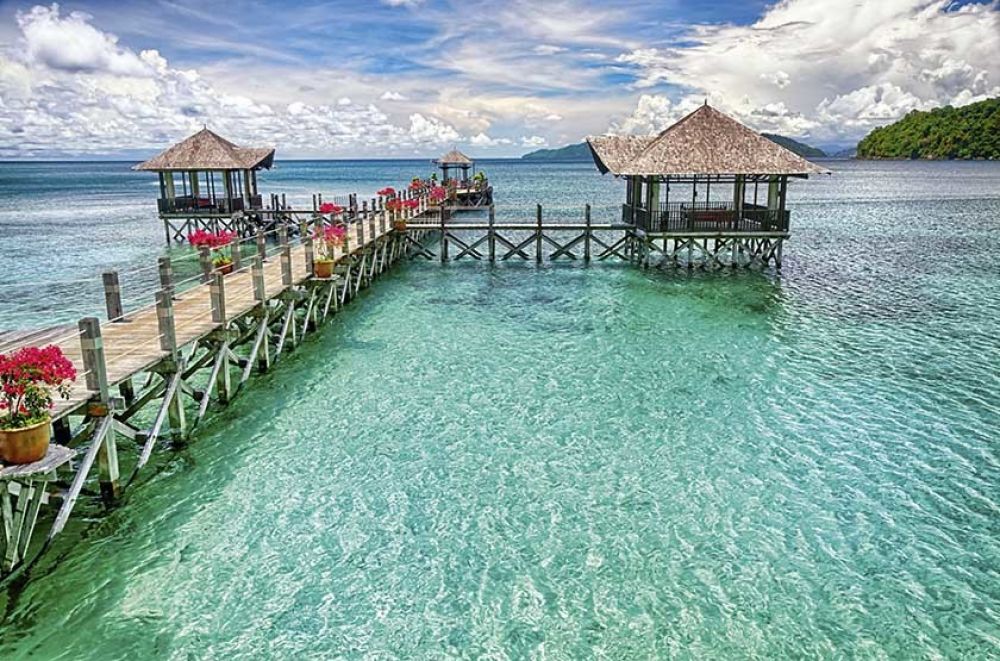
Gather your nearest and dearest to enjoy sun, sand and good times in Asia’s best beach villas. Imogen Lepere finds pads where privacy is guaranteed
The third largest island in the world is all but covered with rainforests. With very little infrastructure, its wild interior can be a daunting place to travel, which makes Sabah even more inviting. This pocket-sized region on the island’s northern shore is packed with natural wonders. Watch baby orangutans flex their muscles at Sepilok and spot enormous rafflesia flowers looming over Kinabulu Park. From the coral reefs of the Kota Kinabalu islands to the glorious beaches at the Tip of Borneo, you’ll be able to take in some of the country’s greatest treasures in a short space of time. The area is a Malaysian state and has a wide-ranging food scene. On celebration days order jaruk, wild boar fermented in bamboo with tapai: a pungent rice wine.
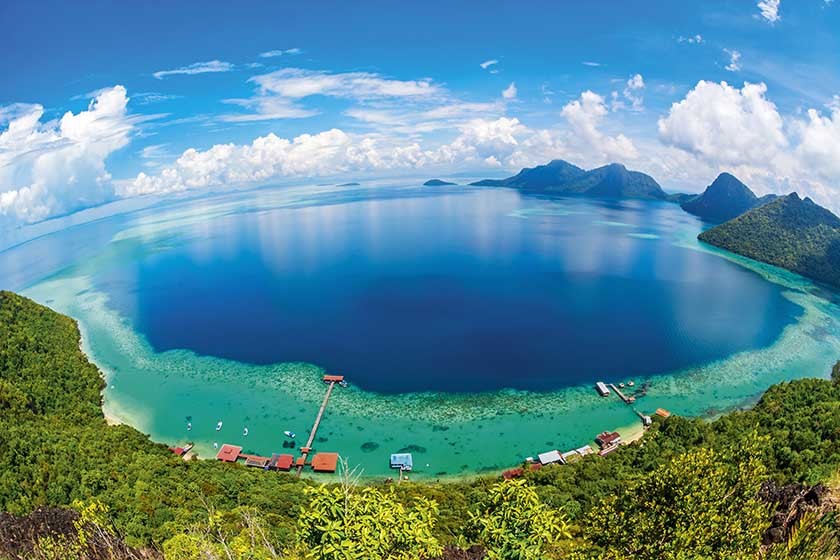
HIBISCUS VILLA
This fully staffed hideaway is built around a T-shaped pool which stretches out into huge gardens hacked out of the jungle, with private access to Pantai Kalampunian beach. Perfect for families, tropical beams support the open-plan living and dining area, where a local chef will rustle up whatever you desire. There’s free snorkelling equipment with which you can explore breathtaking reefs a little way off shore, while bikes and paddle boards can be hired from the villa. Sleeps nine. hibiscusvillaborneo.com
PRICES FROM: £4,144 per week (£460pp)
BUNGA RAYA
Set in pristine forests on an
island off Borneo, this villa
blends jungle chic with
colonial charm. Built over
two levels so that every room
has top views, it also has a
pool and whirlpool bath on
the upper floor. The hotel is so accustomed to hosting
celebrations it offers
tailored packages, which
can include everything
from blow-dries to flower
arrangements. Spend an
evening in the wine cave,
which houses 4,500 bottles
and has a cigar terrace. Sleeps
six. bungarayaresort.com
PRICES FROM: £10,052 per week (£1,675pp)
One of Indonesia’s last frontiers, this alluring chain of 70 islets floats a little way off the western coast of Sumatra. They were all but cut off from the outside world until the 19th century and the number of endemic species can be compared to Madagascar. Nature lovers will be in paradise. Look out for simpai Mentawai (shaggy black and gold monkeys) and black-bellied squirrels. Deserted beaches come as standard here, so you’re guaranteed utter seclusion, while strong trade winds from the Indian Ocean create some of the most consistent surf on the planet – the archipelago is speckled with surf retreats. On the larger islands, the culture is mainly tribal and the elaborate tattoos, which signify everything from age to status, are fascinating.
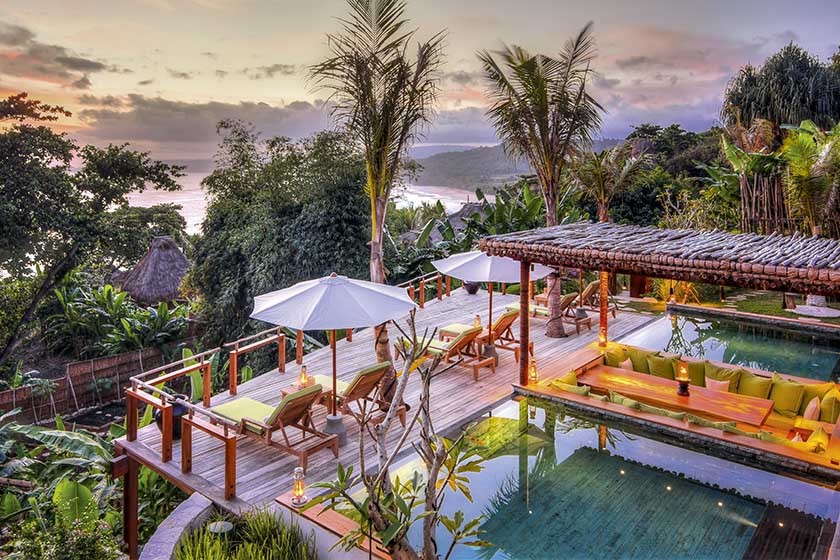
KANDUI VILLAS
Located on a tiny pearl of
a private island in the area
known as Playgrounds, this
12-room resort is a testament
to the fact that eco-friendly
and luxury are not opposing
principles. Sikerei is in fact
made up of three thatched
umas (traditional Mentawai
houses) connected by covered
walkways, but inside all three
you’ll find carved wooden
panelling and handmade
furniture. A nanny is on hand
to ensure parents can enjoy
the organic plates served at
the restaurant in peace.
Sleeps 18. kanduivillas.com
PRICES FROM: £16,632 per week (£924pp)
NIHI SUMBA ISLAND
It doesn’t get much more exclusive than this private estate on one of Indonesia’s least explored islands. Five bedrooms are found in Edenic tropical grounds, which run down to the ocean and house a great range of facilities. Relax in the hot tub, alternate between two pools, try some yoga at your own waterside pavilion and catch rays on two levels of wooden decking. For an intimate wedding or an exquisite family reunion, you’d be hard pushed to find a spot more luxurious than this. Sleeps 18. nihi.com
PRICES FROM: £44,450 per week(£2,469pp)
Built as an elite holiday destination by French colonists in 1908, Kep was all but forgotten when the Khmer Rouge took over. Only recently has a new wave of wealthy Cambodians started buying up the buildings (including a half-finished palace belonging to the king of Cambodia who abdicated in 2004) and transforming them into luxurious properties. Kep Beach offers lovely swimming, but for a real Robinson Crusoe experience, charter a boat to take your party to Koh Tonsay (Rabbit Island). This paradisiacal place is ringed by beaches and shaded by coconut palms with hammocks strung in-between. Back on the mainland, the interior of the Kep peninsula is a national park, where you can hike and spot rare butterflies through the gloom. Kep is famous for the quality of its crab, and these form the basis of most celebratory meals. Simply served with just salt, pepper and a squeeze of lime, they are utterly delicious.
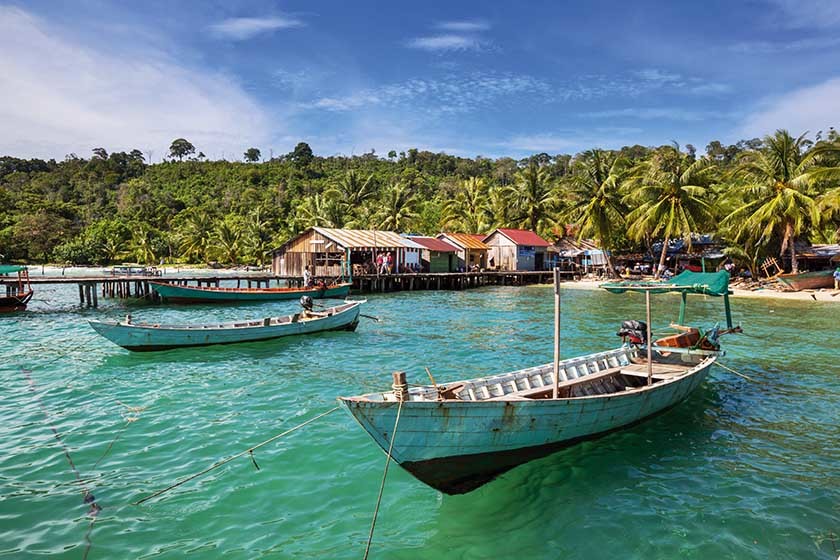
VILLA ROMONEA
This fully staffed modernist
mansion was built in 1968,
when Kep was enjoying its
glamorous heyday. The 2ha
estate includes a tennis court,
six-hole mini golf course and
enormous pool surrounded by
geometric vintage-style sun
loungers. There is also a
shallower pool for children.
The interiors channel the best of Sixties glamour, with
bold splashes of colour and
mid-century furniture.
Sleeps 12. villaromonea.com
PRICES FROM: £2,109 per week (£175pp)
SAMANEA BEACH RESORT
Tucked away between a
protected mangrove forest and
the sea, this all-villa resort is
built on the foundations of
abandoned seaside cottages.
Rebuilt with local stone, the
Family Suite villa is decorated
with Cambodian antiques and
has a huge outdoor bathtub
in a sprawling garden with
complete privacy. Dining is
available on the platform at the
end of the jetty or in a clearing
in the forest. Sleeps four.
samanea-resort.com
PRICES FROM: £1,120 per week (£280pp)
A tropical beauty basking in a blue, blue ocean, this Indonesian island is eye- wateringly good looking. While the bass may blare out over Kuta’s beaches long into the night, look to the quieter coasts for a sense of calmness and creativity. The wild west is the least explored (you’ll still find weekly bull races in the town of Negara which make for an authentic day out), while the east is a land of lush rice paddies and volcanic beaches where stylish properties contrast with traditional villages. Home to the only predominantly Hindu community in Indonesia, spirituality is at the core of local life. On most days you’ll spot a colourful procession wending its way to one of the 10,000 temples which gather on the island’s hills and mountains like gilt-trimmed snowflakes. On big rites of passage such as weddings and funerals, whole villages gather to enjoy babi guling, a suckling swine spit roasted in a pungent paste of shallots, garlic, ginger, turmeric and coriander. Served with fluffy rice and shards of crispy skin, it’s an exotic take on a hog roast, but be sure to let your chef know in advance if you’d like to try it, as it takes more than five hours to cook.
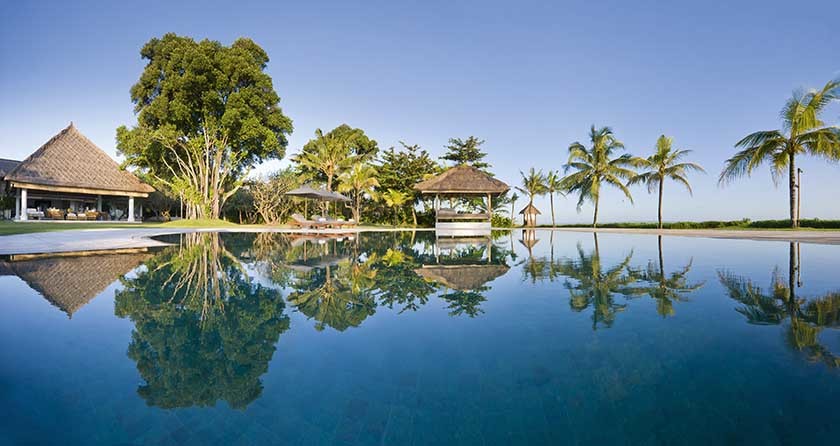
ATAS OMBAK
Set in 1.5 acres of tropical gardens and commanding 100 metres of private beachfront, this fully staffed destination villa offers total seclusion, yet the buzzy bars of Seminyak are an easy stroll away. Five bedrooms are scattered between the main house and a guest pavilion, ideal for families with grown-up children looking for privacy, and all have glorious sea views. We love the fact that the main living area is an open sided thatched pavilion by the pool, where you can enjoy sea breezes on the sofas by day and make the most of the high-tech sound system as the sun goes down. Sleeps ten. atasombak.com
PRICES FROM: £9,555 per week (£955pp)
VILLA CAMPUHAN
One of a group of six
excellent-quality serviced
villas on Bali’s peaceful
east coast, lofty Villa Jasi is
built on bamboo stilts above
a millpond-still lagoon.
Ideal for two couples, woven
walls and glassless windows
create the impression of
living in an extremely
luxurious tree house. A
guarded gate ensures no
one but guests can bask by
the shared infinity pool which
looks out over the Lembeh
Strait. There are 12 full-time
staff for the complex, who
can organise anything from cooking lessons to
private yoga instruction
in your villa. Sleeps four.
villacampuhan.com
PRICES FROM: £1,366 per week (£341pp)
Initially foreigners travelled to Thailand’s biggest island to mine tin, but now they flock in their droves in search of gold. We’re talking golden, sandy beaches of course, and in particular the splendid ones that run along the majority of the island’s west coast. In the Noughties they mainly attracted wide-eyed backpackers, but in recent years the Pearl of the Andaman has gone rather more upmarket. Now it’s awash with seriously desirable real estate and world-class resorts. Despite its popularity, much of the island’s traditional Thai charm remains. Walk through the streets of Phuket Old Town during the shimmering afternoon when most holidaymakers are at the beach and it will be easy to imagine you’re in the 19th century thanks to the pastel-painted Sino Portuguese houses. Back on the west coast, there are so many beaches it’s always possible to find a quiet spot. Try Banana Rock, Mai Khao and Natai. Malays, Chinese, Indians, Thais and ‘sea gypsies’ have all contributed to the culture and the island’s cuisine has a magpie quality to it. Kanom Jin, rice noodles in fiery coconut broth with condiments, is often eaten at celebrations as the noodles symbolise long life.
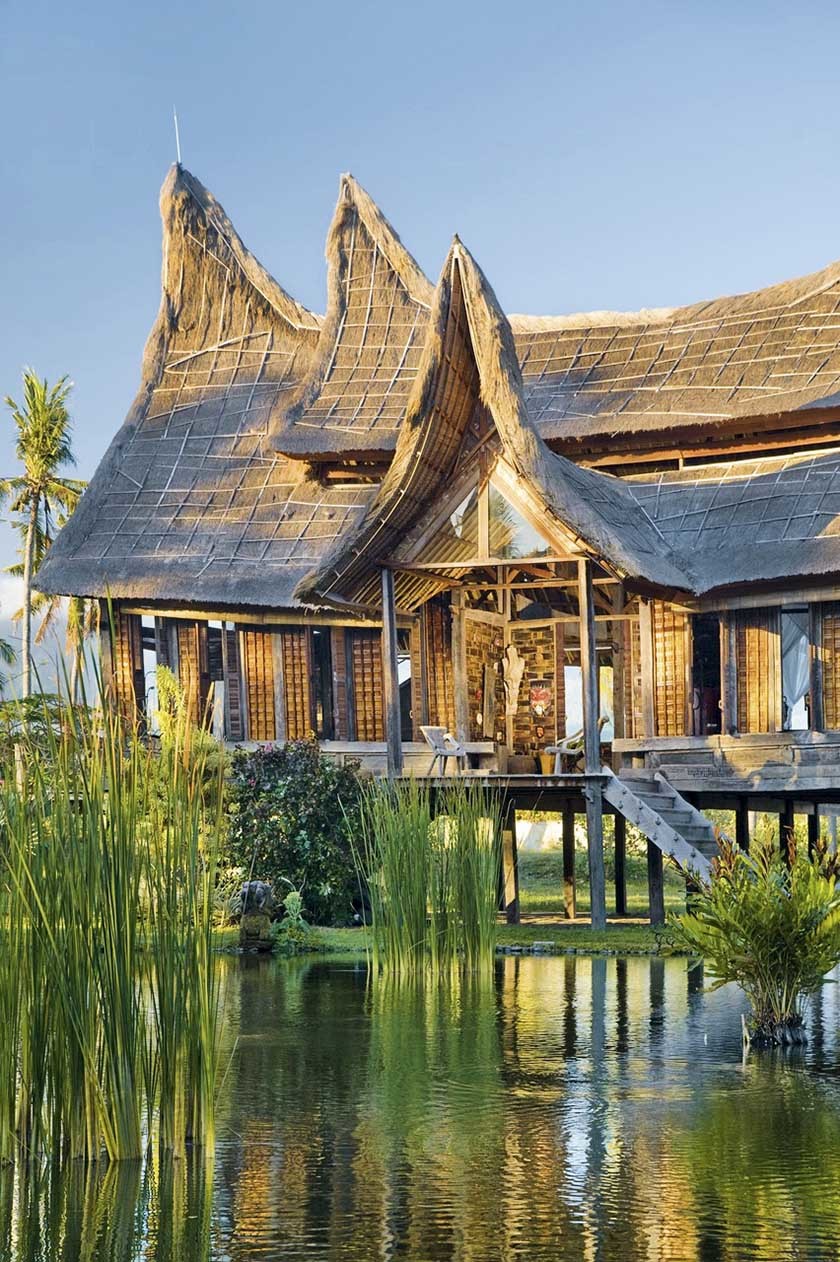
BAAN TALEY ROM
This contemporary jewel has an outdoor dining pavilion sandwiched between pristine Natai beach and the expansive pool. A large team of staff including babysitters makes it ideal for families, giving you plenty of time for a Thai massage in the seafront sala or a gym session. Local art, golden-hued wooden floor boards and large balconies seamlessly welcome the outside in with aplomb. Sleeps 12. villaleelawadee.com
PRICES FROM: £8,231 per week (£686pp)
VILLA AMANZI KAMALA
A masterpiece built into a cliff
above Kamala, this property’s
crowning glory is the infinity
pool which extends off the
cliff face towards the sea.
Gleaming white surfaces with
stainless steel accents, a pool
table and gadgets such as a
touchscreen sound system
create a sophisticated
apartment-style vibe. A living
space carved out of the rock
and largely open to the
elements, is the ideal place
for lingering with cocktails.
Sleeps 12. villaamanzi.com
PRICES FROM: £9,028 per week (£752pp)
The least-populated region in the country, this group of over 1,700 islands is the most biodiverse. Underground rivers snake through sea caves before flowing into bays where gentle dugong feed on meadows of seagrass, while peacocks with metallic plumage and more than 600 species of butterfly are among these islands’ kaleidoscope of creatures. The slender mainland stretches 650km, almost to Borneo, and has plenty to offer, including the laid-back towns of El Nido and Coron to the north. However, its limestone cliffs and tropical forests are starting to pull crowds, especially in the dry season (November to May). The best way to appreciate the region’s beauty is by basing yourself on one of the islets that surround it. These flecks of limestone, sand and jungle are home to hideaways ranging from private-island hotels to beach huts. On feast days, food is laid out on a long table, where guests pick from the likes of tamilok (molluscs that live in mangroves, served with lime and vinegar), crispy pata (deep fried pig’s trotters) and shrimp.
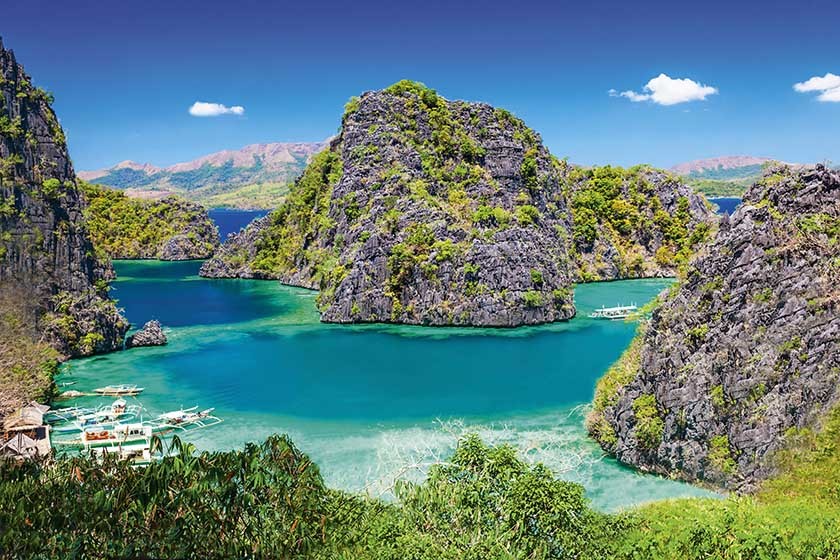
ARIARA
The most private and lavish option on our list of the best beach properties, this exclusive-use island is scattered with quirky cottages and villas, making it ideal for a wedding or birthday party. Set up a sumptuous commune with your friends, spending your time exploring the island’s 50 hectares of jungle, 600m of beach and thriving coral reefs, or simply just lounge around the central infinity pool with private cabanas. A fully crewed yacht (which is included in the cost) is on hand should you fancy a brief dalliance with the outside world, but with everything from a cocktail bar to yoga instructor and masseuse on hand, we can’t image you’ll want to stray far. Sleeps 18. ariaraisland.com
PRICES FROM: £40,368 per week (£2,242pp)
AMANPULO
This four-bedroom villa designed around an infinity pool overlooking a glistening beach, is the last word in sophisticated elegance. Furnished in dark teak, it boasts a private chef and butler, as well as the use of one chauffeur-driven car for each bedroom. In a resort this high end every day feels like a special occasion, but to up the ante still further, reserve the floating beach bar for the evening. The morning after, snorkel out to the live coral reef, a short distance off shore. What better way to mark a special occasion than by enjoying champagne and freshly grilled lobster as you bob gently on the Sulu Sea with your closest friends and family? Sleeps eight. aman.com
PRICES FROM: £36,828 per week (£4,603pp)
Just 2km long by 1km wide, this patch of paradise is the smallest of the three Gili isles. Made up entirely of foliage grazed by cattle and beaches with sand as fine as sieved flour, few destinations offer such a sense of escape. Cars are banned and the only transport is cidomo (horse-drawn carts). Laid-back locals divide their time between playing chess, fishing and hiring dive equipment, which is the island’s main appeal. Ideal for already qualified divers, the Meno Wall extends straight down for 18m and its coral gardens are home to green turtles, porcelain crabs and multi coloured sea slugs.
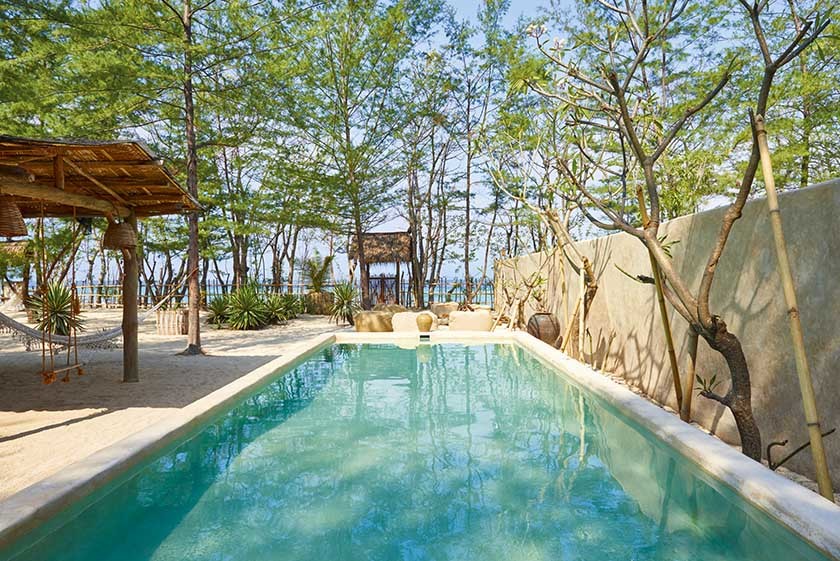
VILLA CRUSOE
It doesn’t get any more idyllic than this. With its thatched roof and sandy yard it seems rustic, but on close inspection you’ll find luxurious details such as an outdoor bath, mosaics and a freshwater pool surrounded by hammocks. Housekeeping is included and meals are best taken by the fire pit. Sleeps eight. theislandhouses.com
PRICES FROM: £2,641 per week (£440pp)
VILLA PULAU CINTA
This property’s owners
lovingly transported the
remains of 200-year-old
cottages from Java and
rebuilt them into a gracious
pool villa, with open-plan
living spaces made for
gatherings. There is a
cinema screen, top sound
system and an onsite chef
at your disposal. Sleeps 16.
villapulaucinta.com
PRICES FROM: £3,233 per week (£202pp)
Nha Trang’s golden sands have been drawing tourists for years, but four hours up the coast, Mui Ne’s 16km of beach remain off developers’ maps. There are no high-rise resorts here. Instead, it attracts well-heeled Vietnamese looking to flee Ho Chi Minh City for the weekend and kite surfers, drawn by the breeze which whistles through the coconut fronds for six months a year. This is a beach destination with plenty to offer active party members. Once they tire of water sports, enormous red and white sand dunes 3km from the beach look stunning and can be explored by foot or on quad bikes.
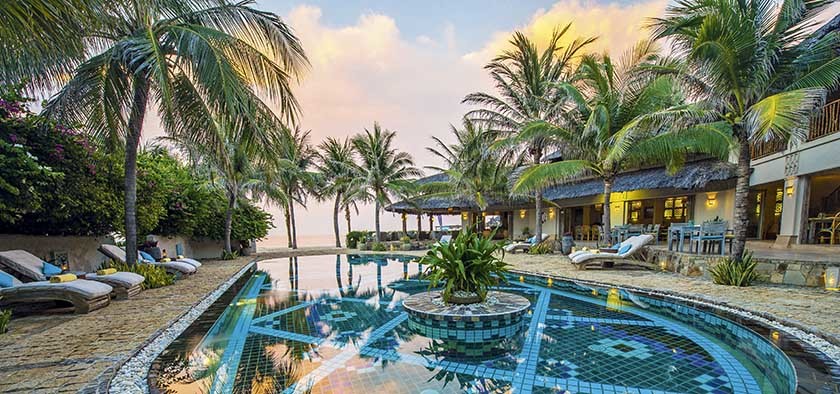
MIA RESORT
Ideal for a select group of friends, this three-bedroom, serviced villa is separated from the rest of the resort by a lush tropical garden and has plenty of privacy. An inviting pool with no shortage of day beds is ideal for long, lazy days while the open-plan living area with a dark-wood dining table and L-shaped sofas lends itself to dinner parties. Sleeps six. miamuine.com
PRICES FROM: £2,500 per week (£416pp)
ANANTARA
This two-bedroom beachfront property is absolutely custom-built for a small family or group of friends. It is fully serviced and has a palm- fringed, sheltered garden with private access to the beach. The poolside dining pavilion is suggestive of long evening meals looking out over the sunset, while a well-stocked bar and iPod dock will keep the party going. Sleeps six. mui-ne.anantara.com
PRICES FROM: £1,708 per week (£284pp)
India’s smallest state is the little black dress of beach destinations – it’s a classic for a reason. A ribbon of sand lapped by the Arabian Sea runs the coastline, while 450 years of Portuguese rule followed by an influx of hippies has created a bohemian culture. Whether you’re looking for seclusion or a degree of privacy plus a town within reach, Goa offers the chance to experience India without the hassle that often comes from the bigger cities. There are still hundreds of clandestine coves and villages waiting to be discovered. Follow the sound of Portuguese fado music to Old Goa to discover intricate baroque cathedrals, or on to Panjim to explore Fontainhas.
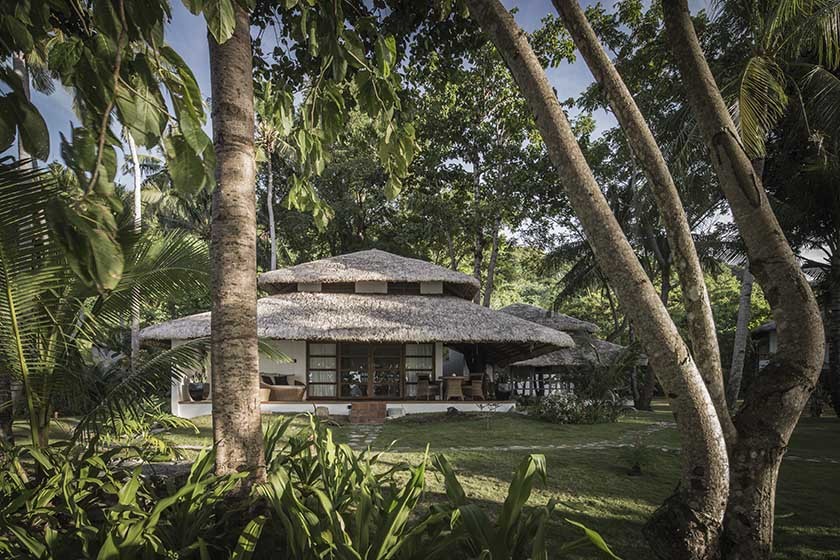
COCO SHAMBHALA
With four equally amazing
villas clustered around a huge
pool, this property is made for
several families on a group
holiday. Tree-top living areas
and plunge pools offer plenty
of privacy, while a culinary
team is on hand so you can
dine en masse under the stars.
Cooking classes, wine courses
and a spa will keep the adults
happy, while Coco Beach is a
short stroll away. A car and
chauffeur are included.
Sleeps 16. cocoshambhala.com
PRICES FROM: £8,640 per week (£540pp)
REDI HOUSE
One of the most stylish beach
houses in the entire state, this
avant-garde gem is furnished
entirely from local materials.
Think cupboard doors made
of seashells, colourful silk
cushions and hand-carved
floorboards. A path shaded by
palms leads to a beach that is
deserted; you can borrow the
kayaks and paddle boards, or
explore the ruins of Maratha
Fort. A housekeeper is
included and a cook available.
Sleeps eight. sjvillas.co.uk
PRICES FROM: £5,280 per week (£660pp)
Since the civil war ended in 2009, much has been made of the fact that the north and east coasts of Sri Lanka are safe to visit. Call us old-fashioned, but in our opinion the south still holds the most appeal. Miles away from the capital, Colombo, this is rural Sri Lanka at its most traditional. Leopards lollop in the shade at Yala National Park, Sinhalese pilgrims in colourful robes trudge their way to the holy town of Kataragama, while the silhouettes of stilt fisherman can be seen at sunset off Weligama and Mirissa. Galle’s medieval streets offer boutiques and arty cafés, but the real draw is the area’s many beaches and quaint fishing villages, where life potters along as it has done for hundreds of years. On high days and holidays, southern Sri Lankans feast on malu ambul thiyal, a sour tuna curry flavoured with Malabar tamarind and kiribath (sticky coconut rice topped with crispy onions and chilli powder).

STELLA BEACH VILLA
This villa harks back to a simpler time. It has 400m of seafront views over Mirissa beach, as well as large gardens and a huge swimming pool. The team are well versed in hosting everything from weddings to anniversaries. Thoughtful touches such as lanterns suspended from the palm trees and cabanas decorated with exotic flowers will make an occasion feel more special. Sleeps eight. stellabeachvilla.com
PRICES FROM: £2,629 per week (£329pp)
THE LAST HOUSE
On Mawella beach, The Last House was one of the final projects that local architect Geoffrey Bawa worked on. Its cream walls are a backdrop for historic furniture, while the blue of the pool looks out over golden sand. Fully staffed, including a chef, it comes with surfboards, bicycles, a croquet set and its own boat, which can be chartered for dolphin-watching. Sleeps 14. thelasthouse.com
PRICES FROM: £4,375 per week (£312pp)
Subscribe and view full print editions online... Subscribe